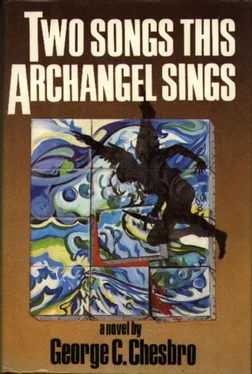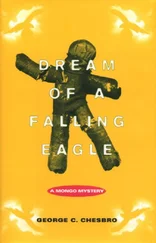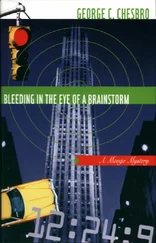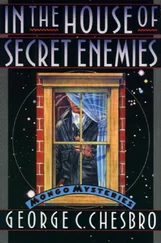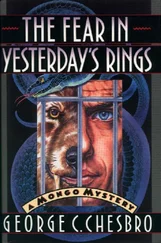George Chesbro - Two Songs This Archangel Sings
Здесь есть возможность читать онлайн «George Chesbro - Two Songs This Archangel Sings» весь текст электронной книги совершенно бесплатно (целиком полную версию без сокращений). В некоторых случаях можно слушать аудио, скачать через торрент в формате fb2 и присутствует краткое содержание. Жанр: Детективная фантастика, на английском языке. Описание произведения, (предисловие) а так же отзывы посетителей доступны на портале библиотеки ЛибКат.
- Название:Two Songs This Archangel Sings
- Автор:
- Жанр:
- Год:неизвестен
- ISBN:нет данных
- Рейтинг книги:3 / 5. Голосов: 1
-
Избранное:Добавить в избранное
- Отзывы:
-
Ваша оценка:
- 60
- 1
- 2
- 3
- 4
- 5
Two Songs This Archangel Sings: краткое содержание, описание и аннотация
Предлагаем к чтению аннотацию, описание, краткое содержание или предисловие (зависит от того, что написал сам автор книги «Two Songs This Archangel Sings»). Если вы не нашли необходимую информацию о книге — напишите в комментариях, мы постараемся отыскать её.
Two Songs This Archangel Sings — читать онлайн бесплатно полную книгу (весь текст) целиком
Ниже представлен текст книги, разбитый по страницам. Система сохранения места последней прочитанной страницы, позволяет с удобством читать онлайн бесплатно книгу «Two Songs This Archangel Sings», без необходимости каждый раз заново искать на чём Вы остановились. Поставьте закладку, и сможете в любой момент перейти на страницу, на которой закончили чтение.
Интервал:
Закладка:
"I don't know. I'll ask him when I find him."
Garth reached out, took the Beretta and the Seecamp out of their holsters, and emptied both boxes of cartridges on the bed. He put a bullet in the chamber of each gun, filled both magazines. When he had finished he shoved the Seecamp under my pillow, put the Beretta, the holsters, and the remaining cartridges into a drawer of the stand next to the bed. "If any hospital personnel try to give you a hard time about the guns, you have them call me."
"I'll keep them out of sight."
"Just as long as you keep them close at hand." Garth gave me a smile and a thumbs-up sign before rising from the chair and heading for the door. He paused with his hand on the knob, turned back. His smile had vanished. "I'll be the one asking Kendry why he sent you out on a paper raft into a sea of sharks," my brother said in a low voice that carried more than a hint of menace. "As a matter of fact, I have quite a few questions to ask Mr. Kendry, and I plan to have his ass in custody by the time you get out of here."
"Garth, you be very careful how you handle Veil Kendry," I said quickly, but my brother was already gone from the room.
6
My hospital stay lasted three more days, and I was out on Wednesday-the one-week anniversary of Veil's disappearance. I hadn't expected Garth and the rest of the NYPD.to find Veil, and they hadn't. Nor had they found my two torturers, although, working from my descriptions, a police artist had come up with excellent sketches. In fact, neither the NYPD nor the F.B.I, could even come up with mug shots, police records, or anything else that matched the faces and the MO of the two men. That , I thought, was what you'd call a low profile.
Fortunately for my feet, I was able to use the telephone to take care of a lot of business involving insurance coverage, credit cards, and so on-all the pieces of paper and plastic without which you feel really naked after you've lost everything but your living room drapes.
I'd feared I would need crutches to get around, but by the time I checked out of the hospital I was able to hobble along pretty well with only a cane. Carrying the loaded Seecamp strapped to my right ankle and the heftier Beretta in its shoulder holster under a jacket, wearing dark glasses and a broad-brimmed fedora low on my forehead, keeping a very wary eye on everyone who passed within ten yards of me, I spent the morning filing for replacements for the documents I had lost, including my P.I. and driver's licenses. I bought two skewers of shish kebob and a can of Pepsi from a sidewalk vendor, ate a leisurely lunch on a bench in a small plaza with my back to a stone wall, peering out from under the brim of my fedora to see if I could spot anybody who might be tailing me. Satisfied after a half hour that I wasn't being followed, I picked up a pad and pen from a stationery store, then took the subway to the 42nd Street library. During the subway ride I copied down as many of the symbols as I could remember that had appeared on the robe Veil had been wearing in the painting.
With the help of a librarian, I began ordering up from the stacks books on the peoples of Southeast Asia, Asian calligraphy and symbology, and even-on the off chance that the shape and color of the robe itself might be meaningful-a text on the Asian textile industry. Four large tomes and an hour later I found what I was looking for, in an anthropology text. The symbols were of a religious nature and were used by a Southeast Asian people called the Hmong. I canceled the rest of my order, filed a new one for three books on the Hmong.
By the time I left the library two and a half hours later, I had learned that the Hmong were a tribal people indigenous to the heavily forested, mountainous regions of Laos. Fiercely independent, the Hmong had fought not only against the Pathet Lao, that country's Communist guerrillas, but against the Viet Cong and North Vietnamese regulars who had used the Laotian jungles as sanctuaries and the trails to move men and supplies into what was then known as South Vietnam. The Hmong had fought for themselves, for their own reasons, but they had also played a crucial role in the C.I.A.'s secret war in that country. The tribespeople had been equipped with American arms, trained in their use, and often led in combat, by
American Special Forces personnel, who, often as not, doubled as C.I.A. operatives. When the Americans left and the arms shipments stopped, the Pathet Lao had moved on the Hmong villages and wreaked a terrible vengeance. Thousands of Hmong were murdered, and virtually all of the remaining Hmong forced to flee. With the assistance of various American agencies, many of these Hmong refugees had emigrated to the United States. There was, according to a New York Times article I found on the library's microfiche machine, a large settlement of Hmong in the Pacific Northwest, particularly around Seattle.
It almost certainly meant, I thought, that Veil had been Special Forces and had spent time fighting with the Hmong in Laos. Probably, he had also been a C.I.A. operative.
It was all enough to start making me a bit nervous.
I had met Viktor Raskolnikov, Veil's patron, art dealer, and friend, through Veil some years before and had eventually become friends myself with the burly, shrewd, gentle Russian. Viktor owned a gallery on Madison Avenue, on New York's Upper East Side. Despite the fact that I was beginning to feel very tired and sore, that's where I headed next, treating myself to a cab ride over a distance I would normally have walked with pleasure.
The Raskolnikov Gallery occupied a four-story building and more closely resembled a small art museum than a gallery. Viktor had made a fortune anticipating "now" movements and "hot" artists in New York's volatile art market. His specialty was the avant-garde, but he touched all the bases and his tastes were eclectic, ranging from antique Persian miniatures to performance art, allowing artists to stage and videotape their "pieces" in a small basement theater.
Each floor of the gallery was divided into rooms of various sizes where "compatible" pieces of artwork were displayed side by side. Viktor opened at noon, stayed open until midnight, and there were always crowds of people moving through the rooms, types ranging from ragtag, struggling artists eyeing the work of their more successful contemporaries, to oil sheikhs looking for good investments.
Veil had a medium-sized room all to himself. Although I happened to know that Viktor had, at any one time, dozens of the prolific Veil's paintings stored away in a humidity-controlled vault, he very shrewdly chose to display only a very few-sometimes only one-of the paintings at a time, and always out of sequence so that it was impossible to guess that they had been spawned from a much larger work. The effect of seeing one of Veil's paintings, surreal and eerie, floating in its own cubical, monochrome sea of space bathed in soft blue or white light was striking, always intriguing, and sometimes disorienting. Viewing it in this way, whether alone in the room or with others, one might have been a passenger on a spaceship looking out a porthole over the surface of an alien world.
"Mongo?"
At the sound of the familiar, rumbling voice I turned away from the painting and found myself looking up into the round, bearded face of Viktor Raskolnikov hovering like a grizzled moon over his huge belly. As always, the Russian was dressed in a finely tailored tuxedo. He was holding a glass of white wine in each hand, and his green eyes glowed with bemused curiosity as he stared down at me.
"Hi, Viktor," I said, nodding my thanks as I took one of the glasses of wine.
"I thought it was you," the gargantuan art dealer said. "But what is with the dark glasses and big hat? I've never seen you wear a hat."
Читать дальшеИнтервал:
Закладка:
Похожие книги на «Two Songs This Archangel Sings»
Представляем Вашему вниманию похожие книги на «Two Songs This Archangel Sings» списком для выбора. Мы отобрали схожую по названию и смыслу литературу в надежде предоставить читателям больше вариантов отыскать новые, интересные, ещё непрочитанные произведения.
Обсуждение, отзывы о книге «Two Songs This Archangel Sings» и просто собственные мнения читателей. Оставьте ваши комментарии, напишите, что Вы думаете о произведении, его смысле или главных героях. Укажите что конкретно понравилось, а что нет, и почему Вы так считаете.
